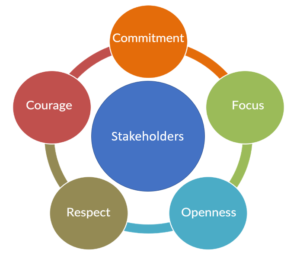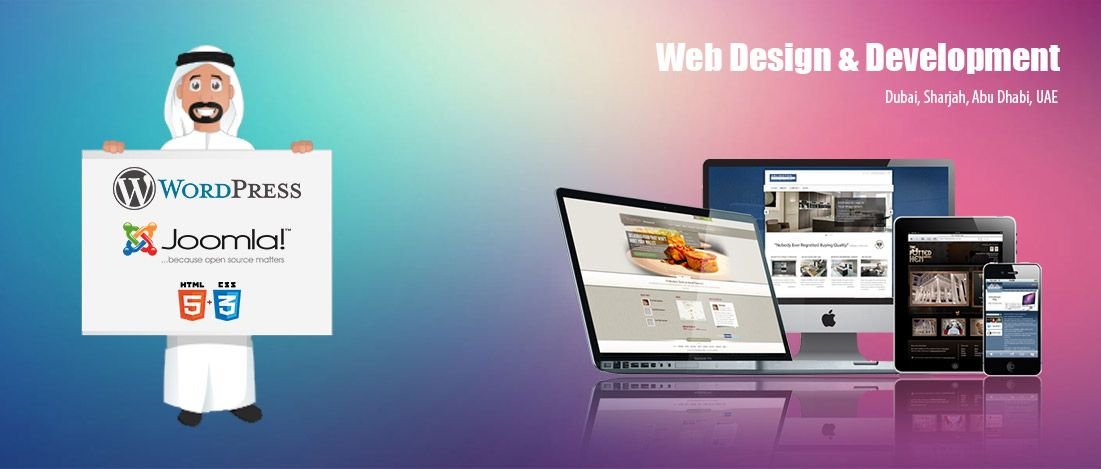In today’s digital landscape, creating inclusive and accessible websites is not just a moral imperative but also a legal requirement. As a web development company in Dallas, it is crucial to prioritize accessibility to ensure that people of all abilities can access and navigate your websites. This comprehensive guide will provide you with essential guidelines and best practices for creating accessible websites that comply with accessibility standards and meet the needs of a diverse audience.
Understanding Web Accessibility:
Web accessibility refers to designing and developing websites that can be used and accessed by individuals with disabilities. It involves removing barriers and providing equal access to information, functionality, and interactive elements for everyone. Common disabilities that need to be considered include visual impairments, hearing impairments, motor disabilities, and cognitive impairments.
Compliance with Accessibility Standards:
Familiarize yourself with accessibility standards and guidelines, such as the Web Content Accessibility Guidelines (WCAG) 2.1 or the Section 508 Standards. These standards provide a framework for creating accessible websites and set criteria for factors like perceivability, operability, understandability, and robustness. Ensure that your web development company in Dallas stays up to date with the latest accessibility standards and implements them throughout the development process.
Provide Alternative Text for Images:
Images play a significant role in website design, but they can present barriers for individuals with visual impairments. Use descriptive alternative text (alt text) for images, ensuring it provides a clear and concise description of the image’s content or purpose. This enables screen readers to convey the information to users who cannot see the image.
Create Semantic HTML Structure:
Develop websites using semantic HTML to provide structure and meaning to web content. Properly structured HTML improves the accessibility and usability of websites. Use appropriate heading tags (h1, h2, h3, etc.) to create a logical outline of the content, aiding screen readers and assisting users in navigating the website easily.
Ensure Keyboard Accessibility:
Keyboard accessibility is essential for individuals who cannot use a mouse or other pointing devices. Ensure that all interactive elements, such as menus, buttons, and forms, can be accessed and operated using only the keyboard. Implement focus indicators, like visible outlines or highlight effects, to make it clear which element currently has keyboard focus.
Consider Color Contrast:
Color contrast is crucial for individuals with visual impairments or color deficiencies. Use sufficient color contrast between text and background to ensure readability. Test the contrast using online tools to ensure compliance with WCAG guidelines. Additionally, avoid conveying important information solely through color, as color-blind users may not be able to perceive the difference.
Provide Captions and Transcripts for Media:
Include captions or transcripts for multimedia content, such as videos or audio files. This benefits individuals with hearing impairments who rely on captions to understand the content. Captions also provide value to users who prefer to consume content in a silent environment or have a slow internet connection.
Test and Optimize for Assistive Technologies:
Test the website using assistive technologies, such as screen readers, screen magnifiers, or voice recognition software. This helps identify any accessibility barriers and ensures that users utilizing assistive technologies can access and navigate the website effectively. Optimize the website to work seamlessly with popular assistive technologies.
Ensure Responsive and Mobile Accessibility:
With the increasing use of mobile devices, ensuring accessibility on various screen sizes is crucial. Implement responsive design techniques to ensure that your website adapts and provides an accessible user experience across different devices and orientations. Test the website on mobile devices to identify and resolve any accessibility issues specific to mobile platforms.
Educate Clients and Stakeholders:
As a web development company in Dallas, it is essential to educate your clients and stakeholders about the importance of web accessibility. Provide them with information about the benefits of creating accessible websites, including reaching a wider audience, improving user experience for all users, and complying with legal requirements. Emphasize that accessibility is not just a checkbox to tick off, but an ongoing commitment that requires continuous monitoring and updates.
Conduct Regular Accessibility Audits:
Perform regular accessibility audits to identify any accessibility issues and ensure ongoing compliance with accessibility standards. This involves manual testing as well as utilizing automated tools to scan for common accessibility errors. Address any identified issues promptly and make necessary adjustments to maintain a high level of accessibility on your websites.
Collaborate with Accessibility Experts:
Consider collaborating with accessibility experts or consultants who specialize in web accessibility. Their expertise and guidance can help ensure that your web development processes align with best practices and accessibility standards. They can provide insights, conduct audits, and offer recommendations to further enhance the accessibility of your websites.
Stay Updated on Accessibility Trends:
Web accessibility is a rapidly evolving field, with new technologies and techniques emerging regularly. Stay updated on the latest accessibility trends, advancements, and research. Attend conferences, workshops, or webinars related to web accessibility to expand your knowledge and stay informed about industry best practices.
Promote Inclusive Design Mindset:
Foster an inclusive design mindset within your web development company. Encourage designers and developers to proactively consider accessibility from the beginning of the design process. By prioritizing inclusive design principles, you can create websites that are accessible by default, rather than retrofitting accessibility as an afterthought.
Continuous Education and Training:
Invest in continuous education and training for your web development team. Provide resources, workshops, or training sessions that focus on accessibility best practices and techniques. This ongoing investment in knowledge and skills will empower your team to create accessible websites efficiently and effectively.
Conclusion:
Creating accessible websites is not only a legal requirement but also a fundamental responsibility of a web development company in Dallas. By following these guidelines and best practices, you can ensure that your websites are inclusive, usable, and accessible to people of all abilities. By integrating accessibility into your web development processes, you contribute to a more inclusive online environment and help individuals with disabilities to access information, engage with content, and participate fully in the digital world. Embrace accessibility as a core value of your web development company and make a positive impact on the lives of users in Dallas and beyond.








